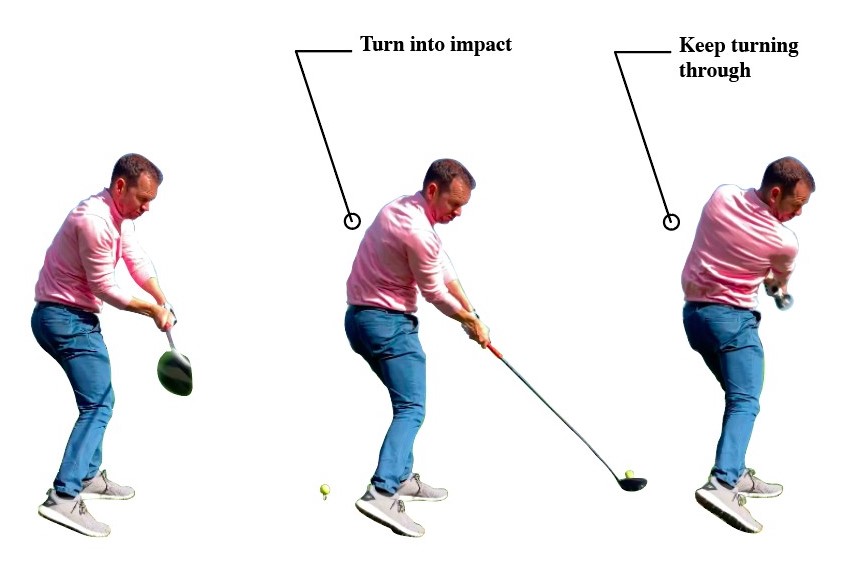Introduction
In this comprehensive article, we will delve into the techniques and strategies to help you hit a driver straight and long. By focusing on sound mechanics instead of relying solely on timing, we can improve our driving performance. We will explore the impact of straight and long drives on scoring, particularly for amateur players. Additionally, we will provide links to resources that can help improve your grip and posture, which are essential fundamentals for the driver swing.
Modern Statistics
Modern statistics reveal the significant influence of straight and long driving on scoring for professional golfers. However, the impact on scoring is even greater for amateur players aiming to improve their game. PGA Pros, on average, hit their drives 70 yards beyond those golfers who shoot 90. Moreover, they hit their drives with a lateral error of just 3.4°, whereas an average 90’s golfer produces a lateral error of 6.5°. These statistics highlight the importance of improving driving distance and accuracy.
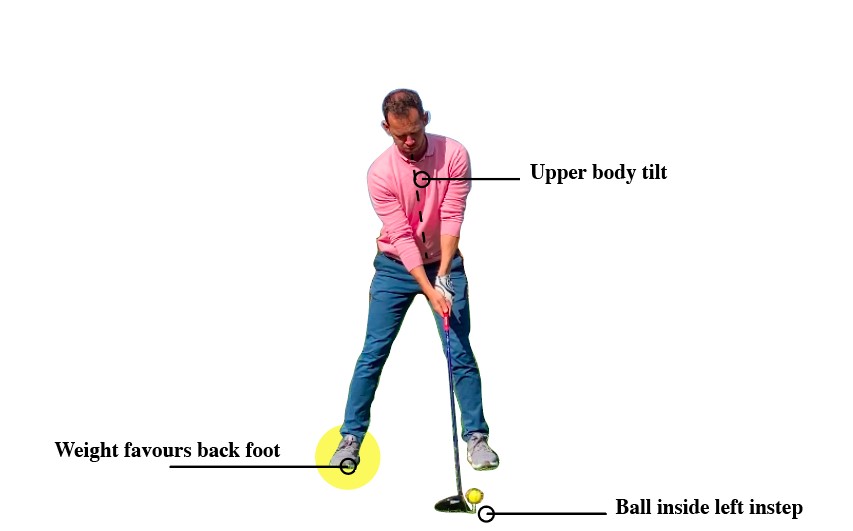
Basic Driver Swing Technique
The following guide assumes you already have sound fundamentals in terms of grip and posture. However, if you need assistance in these areas, refer to the links below:
Before delving into more advanced techniques, let’s establish the basic driver swing technique. The driver is unique as it is meant to be hit on the upswing rather than striking down on the ball. Rather than making any in-swing adjustments, we can achieve the desired upswing by tweaking our setup with the driver.
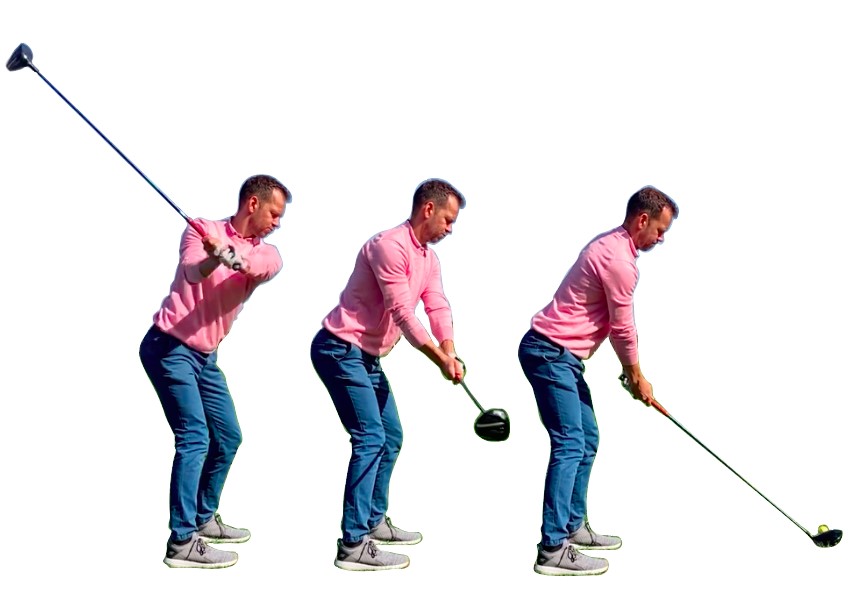
Position the golf ball just inside your front foot when addressing the ball for a driver shot. Additionally, place a little extra weight through your back foot, which leads to a small amount of spine tilt away from the target. These adjustments in setup pre-set the ideal impact position with the driver and facilitate a great backswing.
Tee the golf ball high, aiming to have roughly half the ball visible above the driver head when you are set up. This height ensures a shallow angle of attack and allows for correct release of the club head. The next step is to create a wide takeaway, turning your body and moving the club head away from the target. This motion engages the large muscles around your hips and trunk while shifting more weight onto your back foot.
It is crucial to prevent a common mistake of amateurs when hitting driver – transferring weight onto the back foot near the top of the backswing. This late shift leads to timing challenges. Instead, pros shift their weight toward the target early in the backswing, establishing a solid foundation for the rest of the swing. By focusing on getting into good positions earlier, you create a feeling of having more time to execute powerful drives.
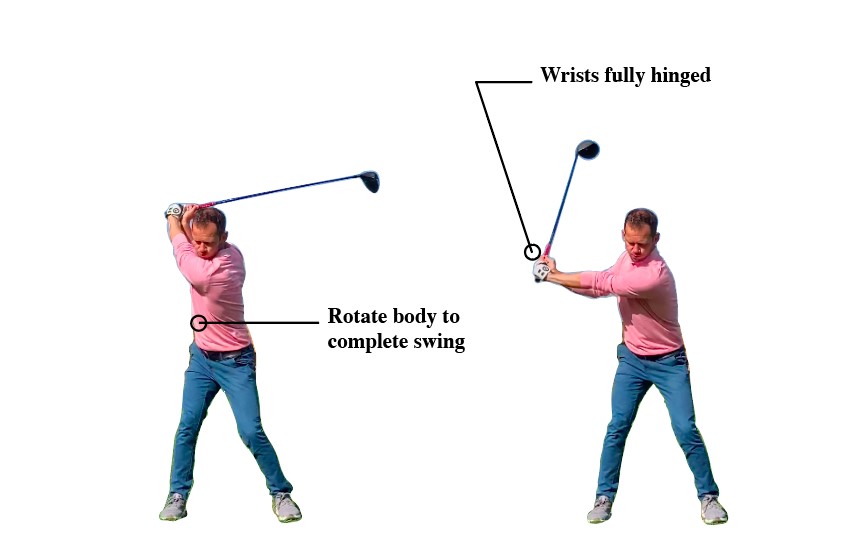
Advanced Techniques
Modern coaching emphasizes a big body turn and an early weight shift when hitting the driver. However, the amount of body turn depends on your physical constraints. Avoid fixating on achieving a specific shoulder turn angle. Instead, aim for a turn that feels coiled and powerful to you. This feeling might equate to a rotation of 45° or 110°, it is about finding the sensation of power rather than conforming to a set position.
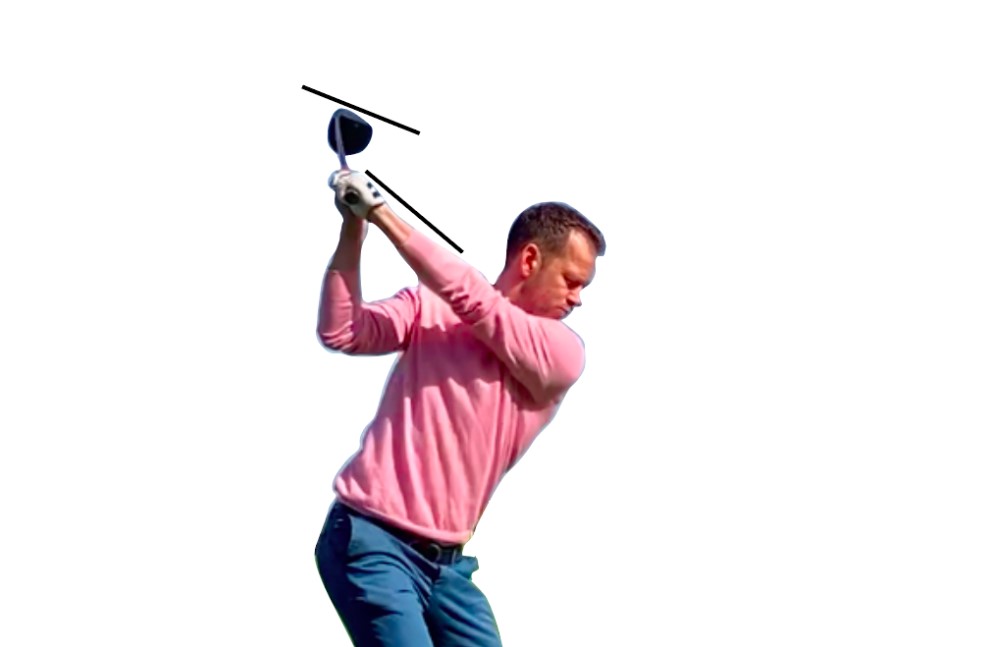
As you reach the top of your swing, your wrists should be fully hinged, and you should continue rotating your body to complete the backswing. The goal is to have your wrists fully set just after your left arm passes 9 o’clock on a clock face. This method simplifies the downswing transition and promotes greater consistency, even though there is data suggesting late wrist setting may increase clubhead speed.
For a strong, powerful ball flight, your club face angle should be square or slightly closed to your forearm angle at the top of your swing. This position minimizes the work required in the downswing to square up the club face. Keep in mind that the ideal club face position is more complex than maintaining a flat left wrist. It is influenced by the strength of your golf grip, wrist angles, and pronation/supination. Adjusting these factors can help fix slicing issues. Avoid trying to alter your club face angle at the top of your swing, and instead, focus on creating your ideal position halfway back when your wrists are setting. This approach proves to be more consistent and easier to execute.
Shallowing out the shaft angle when starting the downswing is an essential move that can greatly enhance your driving. Many golfers struggle with this technique because they haven’t mastered the earlier steps in the backswing. Once you have established a solid backswing using the techniques mentioned above, the transition becomes easier. The desired move involves the driver, hands, and arms falling, resulting in a shallower shaft angle.
If you find it challenging to execute this move consistently, pay attention to your grip and club face position at the top of your swing. Open club faces when attempting this move often lead to a push slice. Therefore, if you struggle with slicing, focus on fixing your club face position first. Additionally, practicing exaggerated swing motions and focusing on momentum can help your body learn the correct feeling of this move. Developing a swing similar to Matt Wolff’s backswing can also be beneficial, as it helps with the sensation of shallowing the driver.
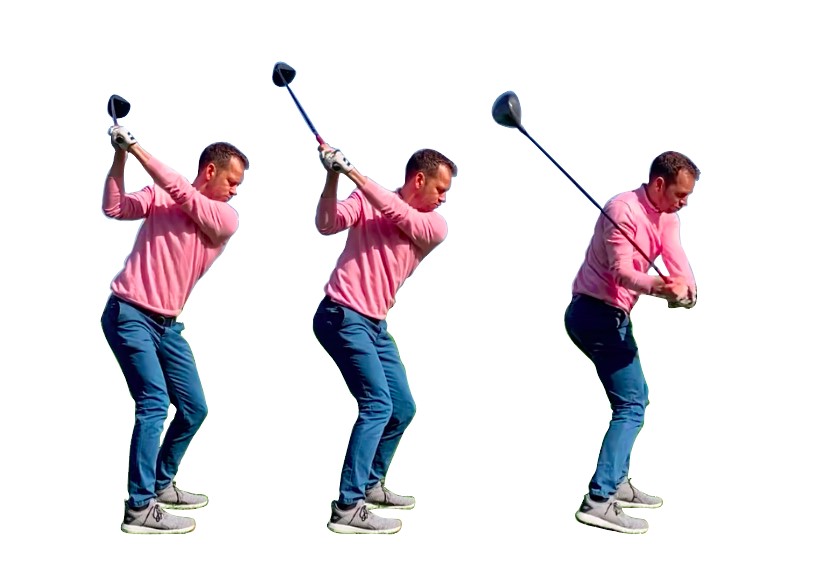
An important aspect of the driver swing is the smooth transition from backswing to downswing. While there may be a temptation to rush this portion of the swing, it is vital to take your time and maintain slower movements. Slowing down allows for better angles and increased clubhead speed at impact.
Pre-Impact and Impact
When the club returns parallel to the ground, we encounter a crucial checkpoint during the driver swing. If the driver head is covering in line with our hands and the toe of the club is pointing straight up, we are well positioned to hit straight drives. However, slicers tend to have the club head outside their hands, with an open club face (toe of the club pointing towards the chin). On the other hand, hookers of the golf ball have the club head inside their hands, with a slightly closed club face (toe of the club pointing away from the body). This pre-impact position plays a significant role in shot accuracy.
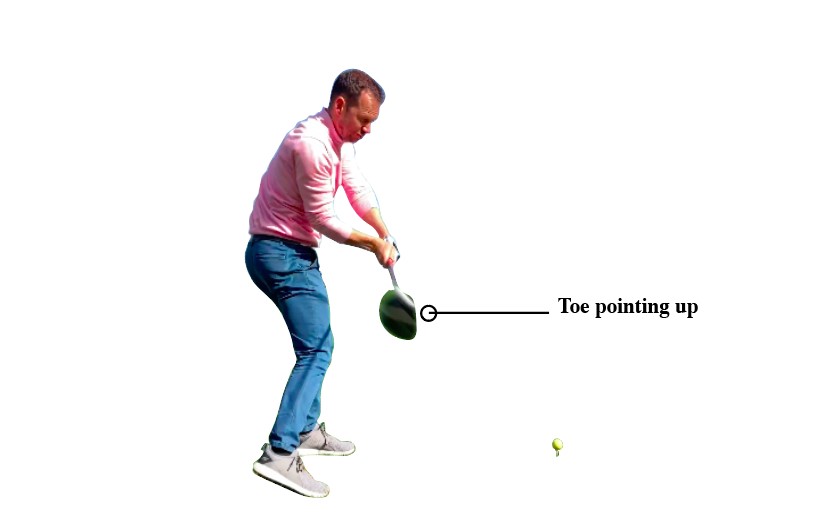
It is worth noting that even small deviations of 3-6° in either direction from a square club face can greatly affect ball flight. While these differences might not appear significant on camera, they have a substantial impact on performance. Building a great backswing and starting the downswing correctly should naturally lead to a favorable pre-impact position.
During the pre-impact phase, focus on unwinding your body through impact. A proper swing mechanics results in straighter drives the harder you unwind your body at impact. Beginners often believe they need to actively rotate the club head or roll their wrists. However, if the club face is correctly positioned pre-impact, these additional actions are unnecessary. By doing things earlier in the swing, you create the illusion of having more time to execute great shots.
It is no coincidence that the best drivers in the world hold an elegant finish. A balanced finish position is the result of effective power delivery through impact, proper sequencing, and overall swing balance. Holding your follow-through until the ball lands can improve your dynamic balance and sequencing throughout the golf swing. This practice helps train your brain and alters how it organizes and performs the golf swing. Start by hitting five smooth swings and try to hold your finish until the ball lands. Once you can consistently hit five drives with a balanced finish, gradually increase your swing speed while maintaining balance.
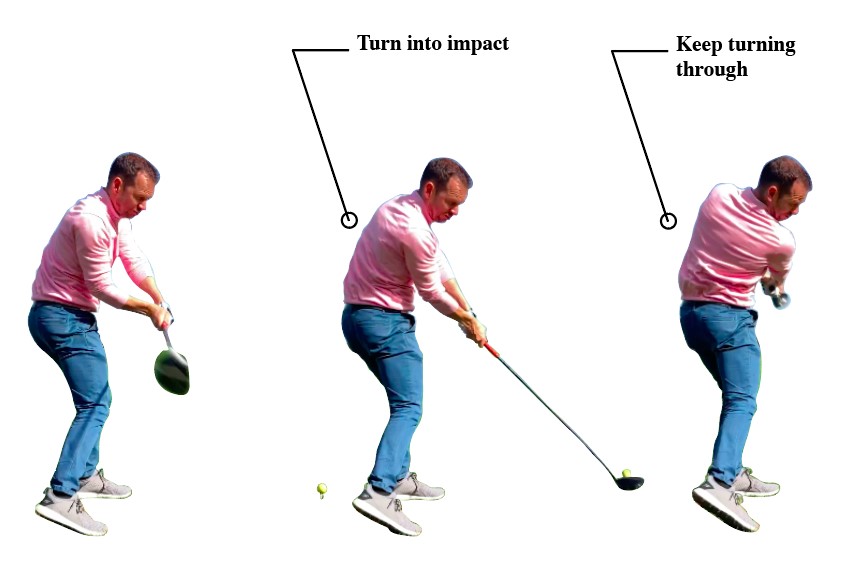
Performance Strategies
Developing a great driver swing extends beyond mastering swing positions. Here are some additional performance strategies to consider:
Grip Pressure and Relaxation
When learning any new move in the golf swing, you may naturally grip the club tighter. This motor learning theory suggests that the body freezes as many degrees of freedom as possible to simplify controlling the new movement. However, in the long run, you will find that relaxed arms and a gentle grip pressure result in more speed and accuracy. If you often feel tense during your drives, try incorporating a step in your pre-shot routine where you squeeze the club hard and then relax all the muscles in your hands and arms before taking the club away.
Ideal Launch Angle
The ideal launch angle with a driver depends on your club head speed. PGA Tour players, with an average club head speed of 112mph, create an 11.2° launch angle with 2,685 rpm. As club head speed reduces to 95mph, the optimal launch angle moves toward approximately 14°. The lower your club head speed, the higher your launch angle needs to be to maximize distance. Understanding this relationship between launch angle and club head speed can help you optimize your driving distance.
Building a Stock Shot
A stock shot refers to an action that may not be optimized for distance or visually appealing but reliably gets the ball down the fairway while avoiding trouble. Developing a stock shot involves identifying your usual miss with the driver and making setup changes and in-swing adjustments to prevent hitting that undesirable shot. Creating a personalized stock shot requires practice and experimentation on the range and the golf course. By understanding and accounting for your typical miss, you can confidently aim and make adjustments that minimize potential errors.
Controlling Misses
All golfers, including professionals, experience both left and right misses with their driver. However, great drivers strive for a miss distribution of approximately 70% of drives in play, 22-25% of drives missing in one direction, and rarely missing in the opposite direction. This level of control allows them to aim straight or favor one side of the fairway while accommodating their most common miss. Achieving a one-way miss requires solid and repeatable swing mechanics, with an emphasis on limiting club face rotation through impact. This key aspect is deserving of a separate article, but utilizing the tips provided here and seeking assistance from a PGA professional can greatly aid in achieving a one-way miss.
Conclusion
Hitting a driver straight and long is a result of honing your technique, practicing performance strategies, and making sound decisions on the course. By focusing on key moves, getting into good positions early, and executing an effective downswing, you can enhance your driving performance. Remember, balance and sequencing throughout the swing contribute to a balanced finish. Additionally, developing a stock shot tailored to your game and managing your misses can greatly improve your performance. Lastly, stay committed to ongoing practice and seek professional guidance to optimize your driving skills and reach your golfing potential. Happy golfing!

